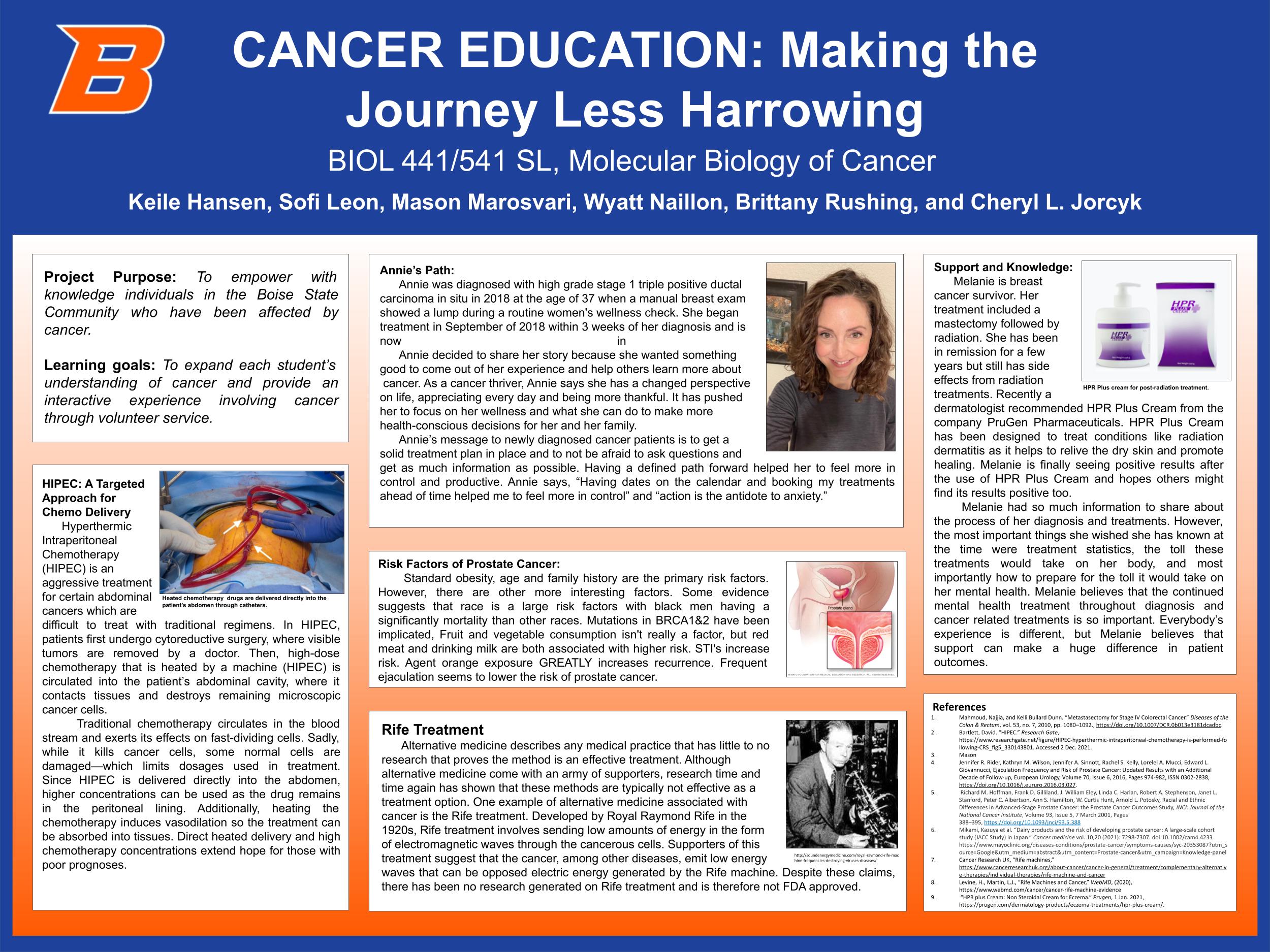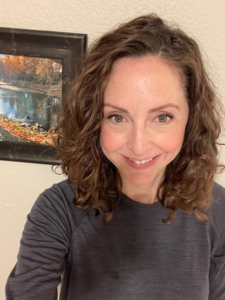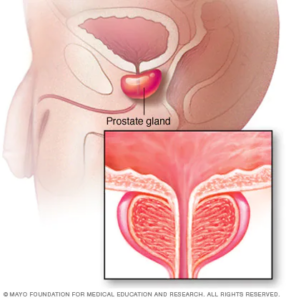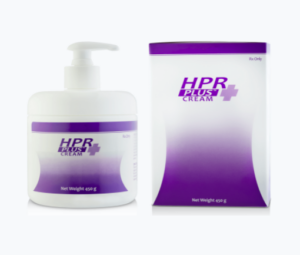Keile Hansen, Sofi Leon, Mason Marosvari, Wyatt Naillon, & Brittany Rushing
Dr. Cheryl Jorcyk – BIOL 441SL/541SL
Cancer Patients and Survivors

Project Purpose:
To empower with knowledge individuals in the Boise State Community who have been affected by cancer.
Learning Goals:
To expand each student’s understanding of cancer and provide an interactive experience involving cancer through volunteer service.
HIPEC: A Targeted Approach for Chemo Delivery
Hyperthermic Intraperitoneal Chemotherapy (HIPEC) is an aggressive treatment for certain abdominal cancers which are difficult to treat with traditional regimens. In HIPEC, patients first undergo cytoreductive surgery, where visible tumors are removed by a doctor. Then, high-dose chemotherapy that is heated by a machine (HIPEC) is circulated into the patient’s abdominal cavity, where it contacts tissues and destroys remaining microscopic cancer cells.
Traditional chemotherapy circulates in the blood stream and exerts its effects on fast-dividing cells. Sadly, while it kills cancer cells, some normal cells are damaged—which limits dosages used in treatment. Since HIPEC is delivered directly into the abdomen, higher concentrations can be used as the drug remains in the peritoneal lining. Additionally, heating the chemotherapy induces vasodilation so the treatment can be absorbed into tissues. Direct heated delivery and high chemotherapy concentrations extend hope for those with poor prognoses.

Annie’s Path:
Annie was diagnosed with high grade stage 1 triple positive ductal carcinoma in situ in 2018 at the age of 37 when a manual breast exam showed a lump during a routine women’s wellness check. She began treatment in September of 2018 within 3 weeks of her diagnosis and is now in remission.
Annie decided to share her story because she wanted something good to come out of her experience and help others learn more about cancer. As a cancer thriver, Annie says she has a changed perspective on life, appreciating every day and being more thankful. It has pushed her to focus on her wellness and what she can do to make more health-conscious decisions for her and her family.
Annie’s message to newly diagnosed cancer patients is to get a solid treatment plan in place and to not be afraid to ask questions and get as much information as possible. Having a defined path forward helped her to feel more in control and productive. Annie says, “Having dates on the calendar and booking my treatments ahead of time helped me to feel more in control” and “action is the antidote to anxiety.”

Risk Factors of Prostate Cancer:
Standard obesity, age and family history are the primary risk factors. However, there are other more interesting factors. Some evidence suggests that race is a large risk factors with black men having a significantly mortality than other races. Mutations in BRCA1&2 have been implicated, Fruit and vegetable consumption isn’t really a factor, but red meat and drinking milk are both associated with higher risk. STI’s increase risk. Agent orange exposure GREATLY increases recurrence. Frequent ejaculation seems to lower the risk of prostate cancer.

Rife Treatment
Alternative medicine describes any medical practice that has little to no research that proves the method is an effective treatment. Although alternative medicine come with an army of supporters, research time and time again has shown that these methods are typically not effective as a treatment option. One example of alternative medicine associated with cancer is the Rife treatment. Developed by Royal Raymond Rife in the 1920s, Rife treatment involves sending low amounts of energy in the form of electromagnetic waves through the cancerous cells. Supporters of this treatment suggest that the cancer, among other diseases, emit low energy waves that can be opposed electric energy generated by the Rife machine. Despite these claims, there has been no research generated on Rife treatment and is therefore not FDA approved.

Support and Knowledge:
Melanie is breast cancer survivor. Her treatment included a mastectomy followed by radiation. She has been in remission for a few years but still has side effects from radiation treatments. Recently a dermatologist recommended HPR Plus Cream from the company PruGen Pharmaceuticals. HPR Plus Cream has been designed to treat conditions like radiation dermatitis as it helps to relive the dry skin and promote healing. Melanie is finally seeing positive results after the use of HPR Plus Cream and hopes others might find its results positive too.
Melanie had so much information to share about the process of her diagnosis and treatments. However, the most important things she wished she has known at the time were treatment statistics, the toll these treatments would take on her body, and most importantly how to prepare for the toll it would take on her mental health. Melanie believes that the continued mental health treatment throughout diagnosis and cancer related treatments is so important. Everybody’s experience is different, but Melanie believes that support can make a huge difference in patient outcomes.
